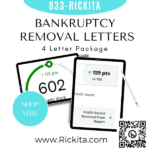Secured Debt:
- Definition: Secured debt is backed by collateral, which serves as security for the lender in case of default.
- Examples: Mortgages and auto loans are common types of secured debt. If you fail to make payments, the lender can seize the collateral (such as your home or car) to recover their losses.
- Interest Rates: Secured loans often have lower interest rates compared to unsecured loans because the collateral reduces the lender’s risk.
Unsecured Debt:
- Definition: Unsecured debt doesn’t require collateral. Instead, it’s based solely on your creditworthiness and promise to repay.
- Examples: Credit card debt, personal loans, and medical bills fall under unsecured debt. If you default, the lender can’t immediately claim specific property but can pursue legal actions to collect what is owed.
- Interest Rates: Unsecured loans typically have higher interest rates than secured loans because they pose a higher risk to lenders due to the absence of collateral.
Understanding the differences between secured and unsecured debt is crucial when managing your finances. Secured debt offers lower interest rates but places your assets at risk if payments are missed. Unsecured debt provides no collateral risk but often comes with higher interest rates and potential credit implications if payments are not made on time. Balancing both types of debt and managing payments responsibly contributes to a healthy financial profile.






